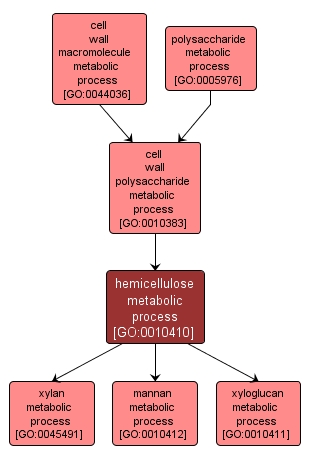| Desc: |
The chemical reactions and pathways involving hemicelluloses, plant cell wall polysaccharides that have a backbone of 1,4-linked beta-D-pyranosyl residues in which O4 is in the equatorial orientation. Many different hemicelluloses usually occur intermixed with each molecular type representing different degrees of polymerization and contain many different sugar monomers, which can include glucose, xylose, mannose, galactose, and arabinose. Hemicelluloses also contain most of the D-pentose sugars and occasionally small amounts of L-sugars as well. Xylose is always the sugar monomer present in the largest amount, but mannuronic acid and galacturonic acid also tend to be present. |














